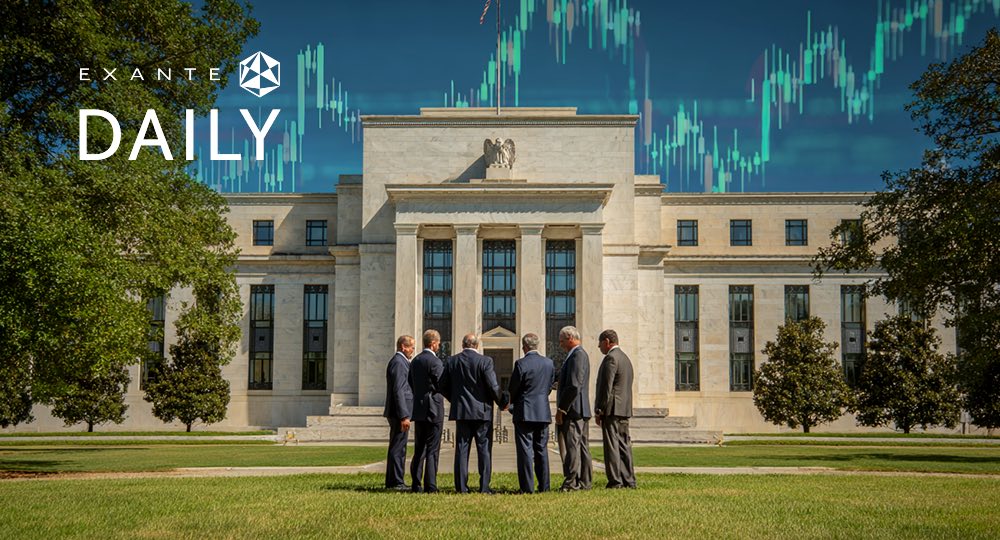- Global bond markets were volatile in May as markets became much more focused on the policy decoupling that we are expected to see throughout this year. The second estimate of GDP growth showed the US economy expanded by 1.3 % over the three months to March, against an original figure of 1.6%. The US labour market is showing signs of softening, with non farm payrolls only rising 175,000 in April, a significant slowdown compared to the upwardly revised 315,000 jobs added in March. The data for February was also revised to 236,000, a decline of 34,000. Average hourly earnings rose 0.2% from the previous month and 3.9% from a year ago. The labour force participation rate, or those actively looking for work, was unchanged at 62.7%. The unemployment rate edged up slightly to 3.9% from 3.8% in March, but remained below 4% for the 27th consecutive month. Annual wage gains also showed signs of moderation, with average hourly earnings rising 3.9% in the year through April, compared to 4.1% growth in March. Wage growth within a range of 3.0% to 3.5% is generally considered consistent with the Fed's 2% inflation target.
- The Conference Board’s consumer confidence index came in at 102.0, ahead of consensus 95.7 and April's upwardly revised reading of 97.5. However, the University of Michigan's consumer confidence index fell from a reading of 77.2 for April to 69.1 in May. A gauge of inflation expectations for one year ahead rose from 3.2% last month to 3.3%.
- The flash Composite PMI Output Index jumped from April’s final reading of 51.3 to 54.4 in May, the highest level since April 2022. The increase was driven by the services sector, with the flash PMI rising to 54.8 from 51.3 in April. The manufacturing flash PMI was also up to 50.9 from April’s 50.0. Headline CPI rose to 3.4% y/o/y in April, slightly down from March’s 3.4%. Core CPI rose 3.6% y/o/y, down from 3.8%. The Fed’s preferred price gauge, the PCE Price index, is due out on Friday and is expected to show that inflation remains sticky at 2.7%, the same as March, which could delay rate cuts even further in 2024.
Yield curves
The Fed kept overnight federal funds rate at the current range of 5.25% to 5.5% at its last meeting. The expectation is that the Fed will continue to keep rates on hold until September if not later.
All eyes will be on the Fed’s preferred gauge of US inflation, the PCE deflator, due on Friday, to determine if rate cuts will indeed be on the cards this year. November.The yield on the 2-year Treasury note, which is highly sensitive to movement of the Fed Funds rate, is 4.94%. The benchmark 10-year US Treasury note yield has fallen to 4.56% from April’s 4.64%, while the yield on the 30-year bond has also fallen to 4.70% from April’s 4.76%.
Yield swings
US Treasury yields in May were volatile, reacting to higher than expected PPI and CPI data and caution from some Fed policymakers that a rate hike could even be on the cards. Markets are now adjusting to the idea that rates may not only be higher for longer, but may not fall until 2025. Duration risk remains a concern with traders waiting on improving inflation data to determine when the first rate cut will take place.


Source: Factset

Source: Bloomberg 10 am EDT 30 May 2024
Global Economic and Market Review
In the UK, the economy has been slowly improving with GDP +0.6% in the first quarter compared to the previous three months. Inflation fell to 2.3% in April from March’s 3.2%, the lowest level since July 2021. Core CPI rose by 3.9% in the 12 months to April 2024, down from 4.2% in March; the CPI goods annual rate slowed from 0.8% to negative 0.8%, while the CPI services annual rate eased slightly, from 6.0% to 5.9%. This services component is seen as an indicator of underlying price pressures in the economy and closely followed by the BoE. The bank will be looking closely at second round effects in terms of how quickly real pay adjusts. Unemployment was up to 4.3% and average wages remained sticky, increasing 6.0% in Q1 in comparison to the same period a year earlier. In addition, the S&P Global Composite PMI decreased to 52.80 points in May from 54.10 points in April of 2024 and the Services PMI fell to 52.9 from 55.0. Nevertheless, consumer sentiment is improving, with the GfK Consumer Confidence Survey showing a rise in the confidence index to -17 in May 2024, up by two points since April. Retail sales volumes also grew at their fastest pace since December in the year to May, with a weighted balance of 8% compared to April’s balance of -44.
As the UK now faces a general election on 4 July, the economy may be less of a worry with unemployment low, wages have outpaced inflation for 10 months and workers are feeling the benefit of £20 billion of tax cuts. However, there is still the weight of the higher cost of servicing public debt when growth is only starting to come back. This may force tax rises and spending cuts. The International Monetary Fund has warned that another £30 billion of savings need to be found to balance the books.
In the eurozone, markets have already accounted for a June rate cut and are indecisive over the speed of the second cut. Money markets have priced in 58 basis points of ECB monetary easing in 2024. This implies two rate cuts and approximately a 30% chance of a third move by year-end. ECB officials, however, are mixed about the timing of further cuts. The problem remains the stickiness of wages. Negotiated wages rose by 4.69% in the first quarter after a 4.45% rise in the previous three months. In April, services accounted for two-thirds of the 2.4% year-on-year rise in the eurozone’s headline inflation rate. At an annual rate of 3.7%, services inflation is above the level consistent with the ECB’s 2% target. The labour market remains tight, with Eurostat reporting that unemployment dropped further in April, falling by 0.1% to 6.4% in April, its lowest level since the formation of the currency bloc in 1999. Markets will therefore be looking closely at Friday's eurozone inflation data to get a better understanding of how quickly the ECB’s second rate cut may take place.
German government bond yields have risen more than US yields, reducing the
10-year yield differential between the US and Germany to around 191.9 basis points in May from 209 basis points in April. The gap between Italy and Germany's 10-year yields, a gauge of investor sentiment towards the eurozone's more indebted countries, is, according to Worldgovernmentbond.com, 131.9 basis points(bps) this month.
Net government bond supply is likely to rise to $340 billion for the United States, euro zone countries and Britain, according to data from BNP Paribas, as redemptions fall and central banks continue to slash their holdings of the paper. This will likely be supportive of higher yields despite expected rate cuts this Summer and Autumn.
With the number of expected Fed rate cuts continuing to fall, it is clear that the divergence in central bank policy will affect markets. As noted by Mohamed El-Erian, the question is the scope and size of the potential divergence, and the implications for reconciling domestic economic priorities with the avoidance of harmful exchange rate volatility. Other risks that may have longer term consequences for inflation and yields include: ongoing and rising geopolitical tensions, growing trade fragmentation, structural demographic shifts affecting labour markets tightness and participation rates, and the consequent impact on wages, particularly in the services sector. In addition, existing regulation aligned to the low-carbon transition may result, in the short to medium term, in higher energy prices. However, this may be limited as we are seeing some pullback from prior “green” commitments. All of these factors are likely to make inflation more volatile in the medium term.
Given the continuing degree of volatility and the increasing, at least over the short term, divergence in policy rates, shorter duration bonds may continue to be preferred by investors. However, investors may wish to consider adding tactical exposure through yield-spread, targeting. Another tactic may be targeting the difference between the same country’s bond yields in different maturities.
Key risks
- Inflation fails to fall in line with projections, weighing on asset prices. It is becoming apparent that there is going to be a divergence in central bank policy rates as inflation may not fall in line with previous projections due to sticky wages, particularly in Europe. There are also risks that headline inflation may rise due to commodity prices rising as global demand increases. We will also see the correlation between the eurozone and US curves diverge as the ECB begins its rate cutting cycle in June. ECB policymakers will have to closely monitor this expected growing yield divergence to ensure that eurozone and European currencies are not overly weakened beyond the point where possible competitive advantages are outweighed by imported inflation.
- Policymakers mistiming on credit loosening leads to recession or reinflation. ECB and UK policymakers in particular will need to be cautious about getting the balance between supporting their now growing economies with future inflation risks. In addition the growing divergence in policy could cause currency volatility.
- Geopolitical tensions and events. These include the ongoing tensions in the Middle East and the continuing war in Ukraine, which may become more complicated in the run up to European parliamentary elections as Europe-wide discussions around aid levels and countries’ relationship within NATO may come to the fore. With recent Chinese military drills near Taiwan, there is also the likelihood of increasing tensions between the US and China as the US moves further into its election cycle.
While every effort has been made to verify the accuracy of this information, EXT Ltd. (hereafter known as “EXANTE”) cannot accept any responsibility or liability for reliance by any person on this publication or any of the information, opinions, or conclusions contained in this publication. The findings and views expressed in this publication do not necessarily reflect the views of EXANTE. Any action taken upon the information contained in this publication is strictly at your own risk. EXANTE will not be liable for any loss or damage in connection with this publication.
Ця стаття надається вам лише для інформаційних цілей і не повинна розглядатися як пропозиція або запит на купівлю або продаж будь-яких інвестицій або пов'язаних послуг, які можуть бути згадані тут. Торгівля фінансовими інструментами пов'язана зі значним ризиком втрат і може підходити не всім інвесторам. Минулі результати не є надійним показником майбутньої ефективності.






